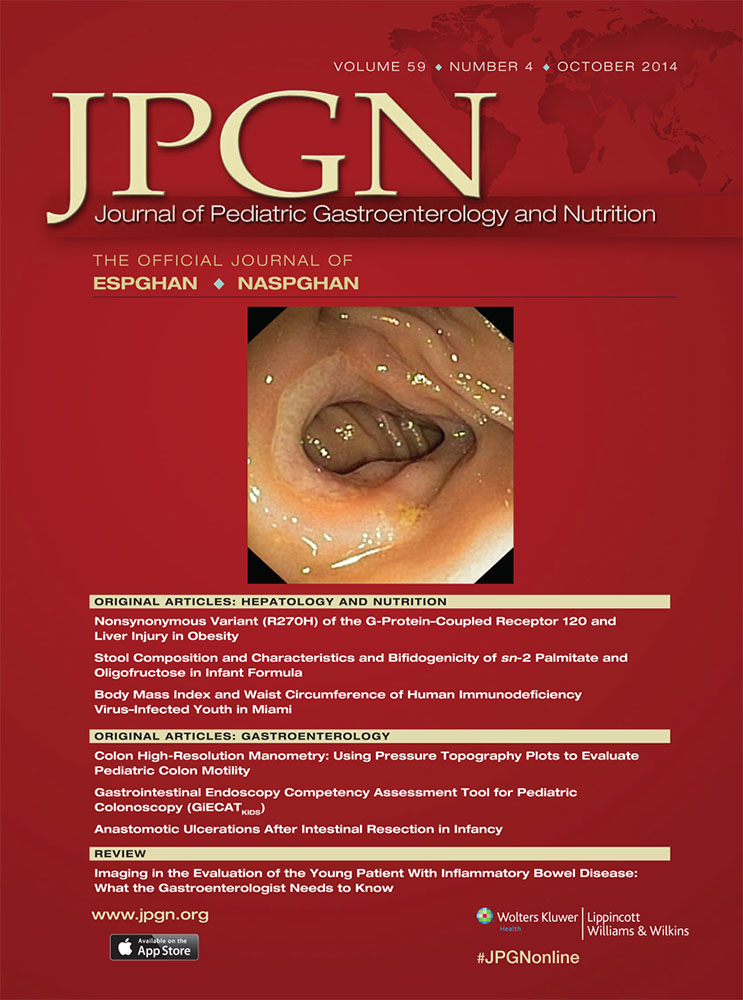Anastomotic Ulcerations After Intestinal Resection in Infancy
The authors report no conflicts of interest.
ABSTRACT
Objective:
Anastomotic ulceration (AU) is a rare complication after intestinal resection and anastomosis, described mostly in children. The main symptom is occult bleeding, leading to iron-deficiency anemia, which is life threatening.
Methods:
The present survey reports a series of patients with AU after intestinal resection in infancy, focusing on predictive factors, medical and surgical treatment options, and long-term outcomes. Eleven patients (7 boys) born between 1983 and 2005 with AU after an intestinal resection and anastomosis in infancy were included in this retrospective review.
Results:
The diagnosis of AU was often delayed for several years. No predictive factor (including the primary disease, the length of the remnant bowel, and the loss of the ileocaecal valve) could be identified. Numerous treatment options, including antibiotics and anti-inflammatory drugs, proved to be ineffective to induce prolonged remission. Even after surgical resection, relapses were observed in 5/7 children.
Conclusions:
The mechanism leading to AU remains unknown. Contrary to previous reports with limited follow-up, no medical or surgical treatment could prevent recurrences. Because relapses may occur several years after treatment, long-term follow-up is needed.




